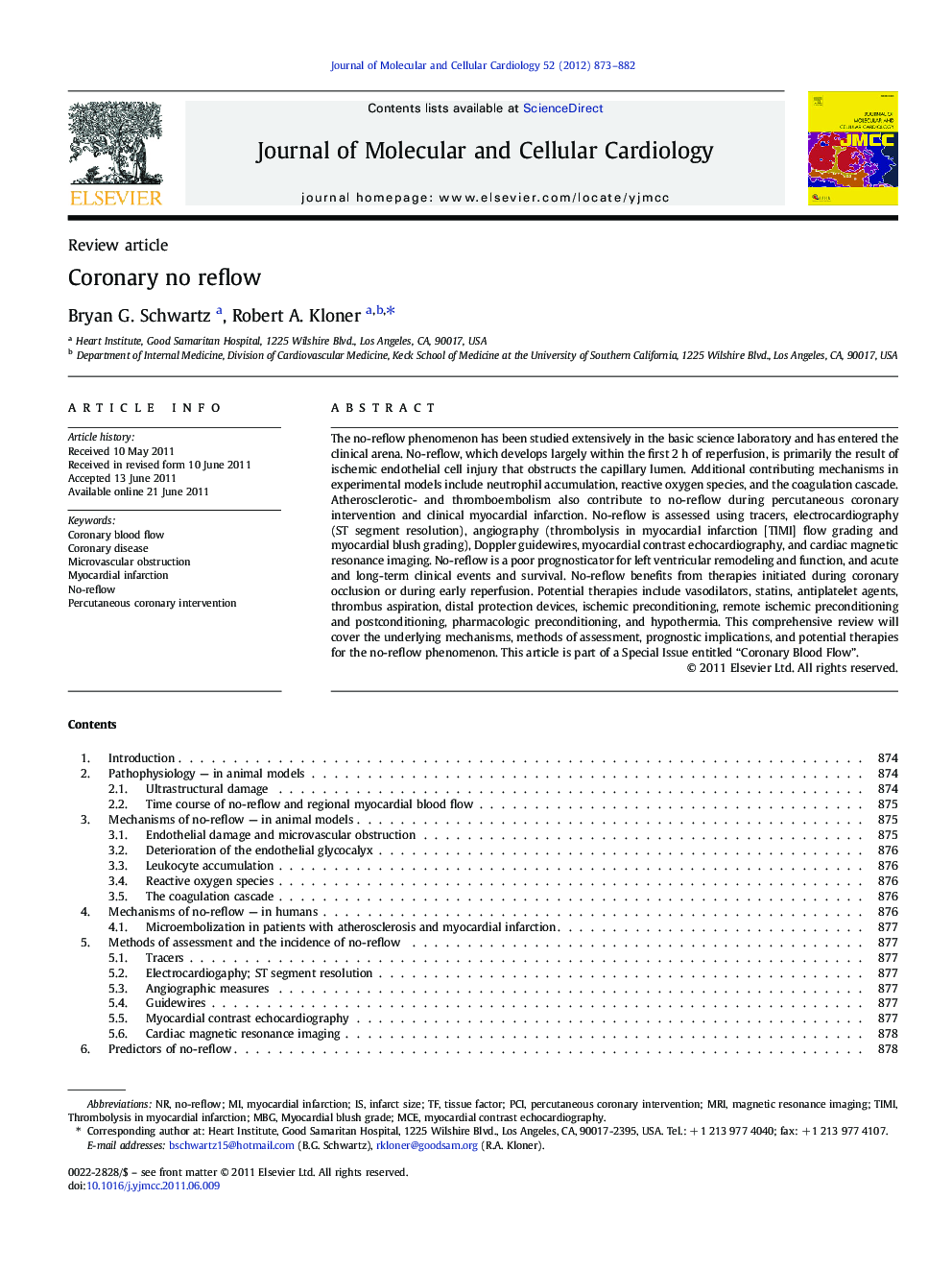| Article ID | Journal | Published Year | Pages | File Type |
|---|---|---|---|---|
| 2190660 | Journal of Molecular and Cellular Cardiology | 2012 | 10 Pages |
The no-reflow phenomenon has been studied extensively in the basic science laboratory and has entered the clinical arena. No-reflow, which develops largely within the first 2 h of reperfusion, is primarily the result of ischemic endothelial cell injury that obstructs the capillary lumen. Additional contributing mechanisms in experimental models include neutrophil accumulation, reactive oxygen species, and the coagulation cascade. Atherosclerotic- and thromboembolism also contribute to no-reflow during percutaneous coronary intervention and clinical myocardial infarction. No-reflow is assessed using tracers, electrocardiography (ST segment resolution), angiography (thrombolysis in myocardial infarction [TIMI] flow grading and myocardial blush grading), Doppler guidewires, myocardial contrast echocardiography, and cardiac magnetic resonance imaging. No-reflow is a poor prognosticator for left ventricular remodeling and function, and acute and long-term clinical events and survival. No-reflow benefits from therapies initiated during coronary occlusion or during early reperfusion. Potential therapies include vasodilators, statins, antiplatelet agents, thrombus aspiration, distal protection devices, ischemic preconditioning, remote ischemic preconditioning and postconditioning, pharmacologic preconditioning, and hypothermia. This comprehensive review will cover the underlying mechanisms, methods of assessment, prognostic implications, and potential therapies for the no-reflow phenomenon. This article is part of a Special Issue entitled “Coronary Blood Flow”.
►Reperfusion after 60 min of infarction causes endothelial injury and no-reflow. ►Neutrophils, oxygen radicals, atherothrombotic embolism contribute to no-reflow. ►No-reflow is assessed using EKG, angiography, guidewires, echocardiography, MRI. ►No-reflow is a poor prognosticator for LV remodeling, clinical events and survival. ►Vasodilators, thrombectomy, IIb/IIIa inhibitors, statins, conditioning benefit no-reflow.
